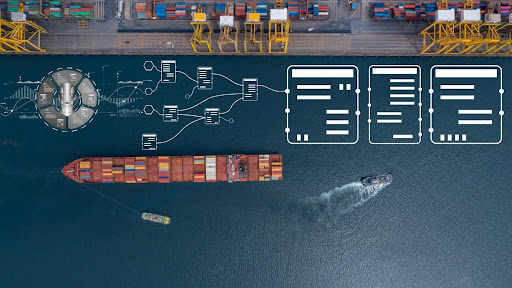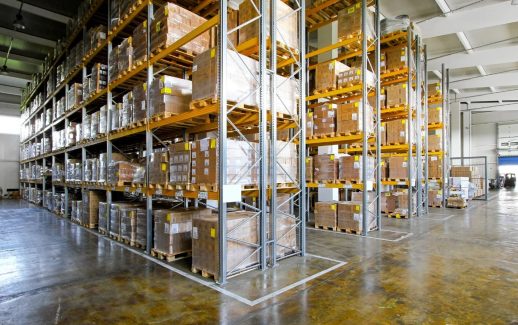Onshoring: Challenges, Benefits, and Impact on U.S. Industrial Logistics and Supply Chain
In recent years, onshoring—also known as reshoring—has emerged as a strategic response to the vulnerabilities exposed by global supply chain disruptions, geopolitical tensions, and economic uncertainties. This process involves bringing manufacturing and production activities back to a company’s home country rather than relying on offshore production. For U.S. companies, onshoring offers numerous advantages, particularly in terms of supply chain control, cost management, and logistical efficiencies. However, this shift also presents challenges that must be addressed for a smooth transition.
Motivations for Onshoring
Onshoring manufacturing addresses immediate supply chain disruptions and strengthens long-term resilience. Several factors are driving this shift:
Supply Chain Control and Resilience: As demonstrated by the disruptions caused by the COVID-19 pandemic, companies that relied on offshore production faced significant challenges. Shipping delays, port congestion, and material shortages revealed the risks of relying on distant suppliers. By bringing production closer to home, companies gain more control over their supply chains, positioning them to better handle future disruptions, whether due to health crises, natural disasters, or geopolitical tensions.
Cost Management: While labor costs in low-wage countries have historically driven the offshoring trend, rising wages and increased transportation costs are making onshoring a somewhat more attractive option. By moving manufacturing closer to home, companies can reduce reliance on expensive inventory storage and cut back on logistics costs, including customs fees and long-haul transportation. Additionally, onshoring may reduce exposure to currency fluctuations that affect international trade.
Faster Response to Market Demands: Onshoring offers a competitive advantage in terms of speed to market. When production is based in the U.S., companies can respond more rapidly to shifting consumer preferences, demand surges, or emerging market trends. This agility is particularly valuable in industries like fashion, electronics, and automotive, where time-to-market can significantly impact profits.
Environmental Considerations: Sustainability is another driving factor behind onshoring. The longer supply chains are, the larger their carbon footprint due to extensive transportation, including air and sea freight. By bringing manufacturing closer to consumers, companies can reduce transportation emissions and align with growing consumer demand for eco-friendly products.
Improved Customer Service: Onshoring leads to faster delivery times, which enhances customer satisfaction. With less reliance on international shipping, companies can ensure shorter lead times, improving their ability to meet deadlines and manage product availability.
Challenges of Onshoring
While onshoring offers several benefits, it is not without its challenges.
Infrastructure Investment: Onshoring often requires significant investments in U.S. infrastructure. New facilities, technology, and workforce training are necessary to support reshoring efforts. The U.S. government’s infrastructure initiatives, such as the Bipartisan Infrastructure Law (BIL), aim to support these efforts by enhancing transportation networks and addressing logistics bottlenecks.
Labor Shortages: The U.S. is currently facing a shortage of skilled workers in critical industries, including manufacturing. There is a growing need for technicians, engineers, and laborers who are capable of operating advanced manufacturing systems. This challenge can be particularly acute in high-tech industries such as semiconductor manufacturing.
Upfront Costs: While onshoring may reduce long-term costs, the initial investment required can be substantial. Moving manufacturing back to the U.S. often involves high upfront costs for building new factories, acquiring new machinery, and retraining workers. For many companies, this upfront capital expenditure can be a significant deterrent.
Supply Chain Reconfiguration: Onshoring requires rethinking an entire supply chain. This can involve switching suppliers, renegotiating contracts, and reevaluating logistics strategies. For many businesses, this is a complex and time-consuming process, especially when scaling up production in a new domestic facility.
The Impact of Onshoring on U.S. Logistics and Supply Chains
As more companies move manufacturing closer to home, the U.S. logistics and supply chain landscape is beginning to experience changes.
Increased Demand for Industrial Space: The onshoring trend has fueled demand for industrial real estate. Warehouses, distribution centers, and manufacturing plants are needed to support reshored production. According to recent research, U.S. freight volume is expected to increase by 42% by 2050 as companies reshore production. As a result, markets such as Houston, Atlanta, Dallas, and Philadelphia are expected to see significant growth in industrial occupancy.
Shift in Freight Flows: Onshoring is contributing to a shift in freight flows, particularly in the U.S. Historically, international trade has been dominated by maritime transport, with goods moving from Asia to U.S. ports. However, as more production moves to North America, land-based transportation (trucks and trains) could surpass sea-bound freight. This shift will likely benefit markets that are well-connected to U.S. highways and rail systems.
Regional Logistics Hubs: The rise of onshoring is also changing the nature of logistics hubs. Ports like Los Angeles and New Jersey have traditionally been key entry points for goods coming into the U.S., but with reshored production, logistics hubs are shifting inland. Cities like Dallas, Atlanta, and Chicago are emerging as key transportation and logistics centers, potentially benefitting from better access to manufacturing operations and reduced reliance on cross-border shipping.
Technology Integration: Digital technologies are playing a crucial role in facilitating onshoring. Industry 4.0 technologies, such as automation, AI-driven manufacturing, and advanced analytics, are enabling companies to optimize production processes domestically. These technologies also enhance supply chain visibility, making it easier to monitor production and distribution, identify inefficiencies, and respond to disruptions quickly.
Looking Ahead: The Likelihood of Onshoring and Its Future Impact
The likelihood of onshoring continues to rise, fueled by both the challenges of offshoring and the technological advancements that make domestic production more feasible. However, onshoring is not a one-size-fits-all solution, and the benefits are not always offset by costs and operational complexities.
However, onshoring does not exclude other strategies, such as nearshoring. For U.S. companies, this might involve moving production to neighboring countries like Mexico or Central America, which offers similar benefits to onshoring, such as lower transportation costs and quicker response times, with potentially lower costs.
Ultimately, the future of U.S. supply chains will be shaped by a combination of onshoring, nearshoring, and digital transformation. Companies that embrace these strategies while investing in infrastructure and talent will be well-positioned to thrive in a new era of more localized, resilient, and sustainable supply chains.


